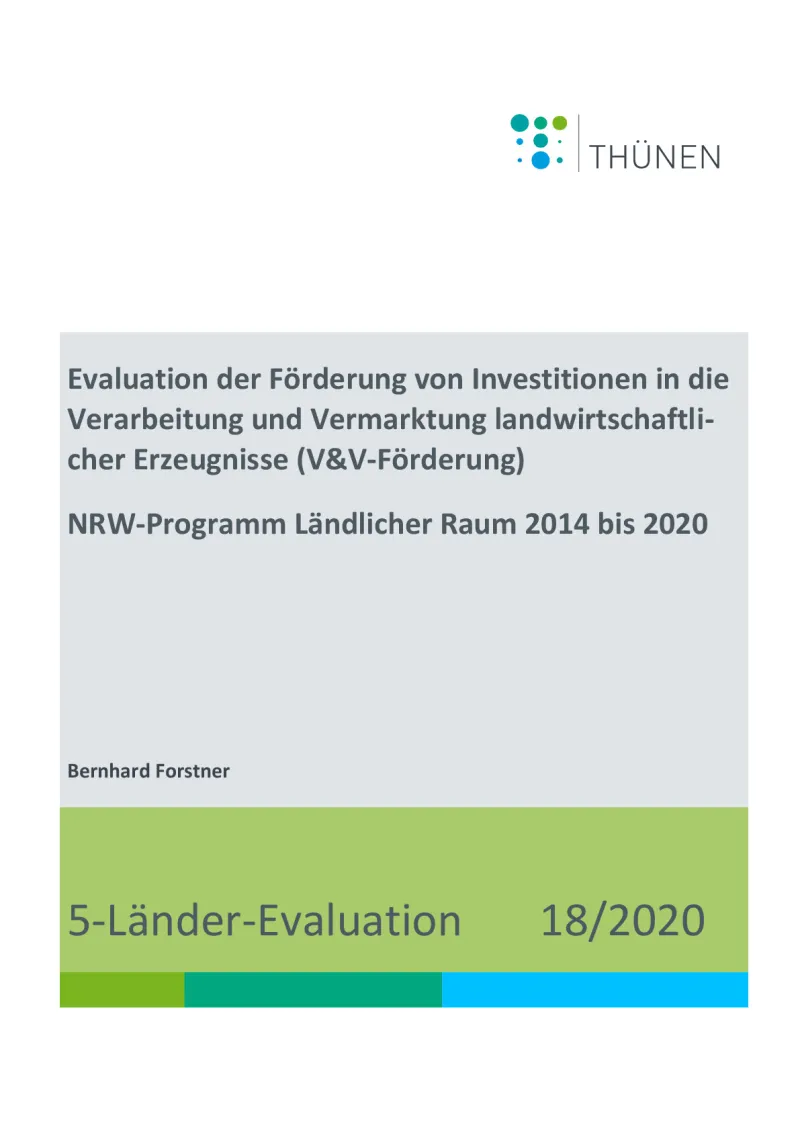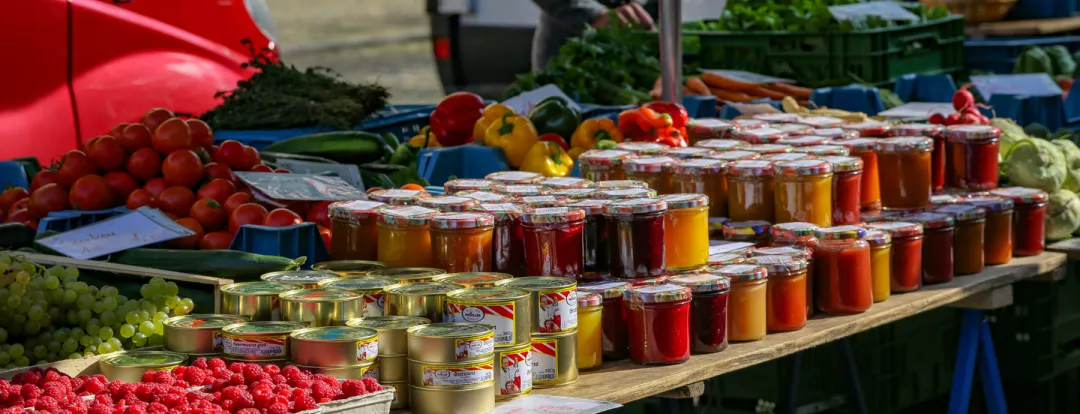Evaluation of the funding of investments in the processing and marketing of agricultural products
The evaluation offers an overview of the challenges and strengths in the agricultural and food sector in North Rhine-Westphalia in Germany, specifically on competitiveness.
- Germany
- 2014-2022
- Socio-economic impacts


The scope of the evaluation is the assessment of the effects of the sub-Measure 4.2 (Investments in processing/marketing of agricultural products) of the 2014-2020 Rura Development Programme (RDP) (Priority 3: Food chain organisation, animal welfare, risk management) in North Rhine-Westphalia with regard to the objectives set.
Companies involved in the processing and marketing of agricultural products and Producer Organisations can receive support for investments contributing to added value.
The analysis is based on data from the granting authority and accounting data (including survey forms) as well as telephone interviews with the supported companies. Application documents provide information about the companies' structures, investments, and economic situation before and after project completion. The collected data include relevant CMEF output and results indicators such as the number of holdings supported and the increase in energy efficiency in agriculture and food processing in supported projects. The collected data allows for before-and-after comparisons to assess the effects of the subsidised investments.
Limitations of the study are discussed in terms of data availability and the early stage of analysis (2020) with a low number of completed projects. By the end of 2019, 29 project applications were approved with a grant volume of EUR 12.9 million. Of these cases, only 20 supported projects were already carried out and the complete documentation (survey information on the situation before and after) was only available for 13 projects.
Therefore, 20 cases could be included in the survey as they had already completed their projects at the time of the interviews. Since the analysis relies on a relatively small database it allows only preliminary results and conclusions.
The evaluation concludes that the implementation of the funding measure lags still a bit behind the original target values for the grant volume of the measure.
So far, the approved projects have only contributed slightly to the objectives of the funding measure. Investments primarily served to expand capacities and modernise facilities. It should be noted that the effects at the company level vary greatly. According to the 20 companies surveyed, competitiveness has improved considerably on average as a result of the investment. Only two companies reported unchanged or declining competitiveness. Gross value added has almost doubled comparing the situation of the companies before and after the completion of the supported projects. Most of the projects (80%) resulted in output growth although the individual values vary greatly. There were hardly any effects on energy efficiency on average while the total energy input of the companies has increased significantly due to the additional processing capacities.
Looking at the net effects of the funding, it can be seen that there was little effect on the targets set due to considerable deadweight effects. The deadweight effect, which was estimated using information from telephone interviews, amounts to about 60%. Overall, it can be stated that only a small potential impact on the sector as a whole can be expected from funding Measure 4.2 due to its limited scope.
Author(s)
Thünen Institute, Bernhard Forstner
Resources
Documents
Evaluation of the funding of investments in the processing and marketing of agricultural products
(PDF – 1.26 MB – 54 pages)